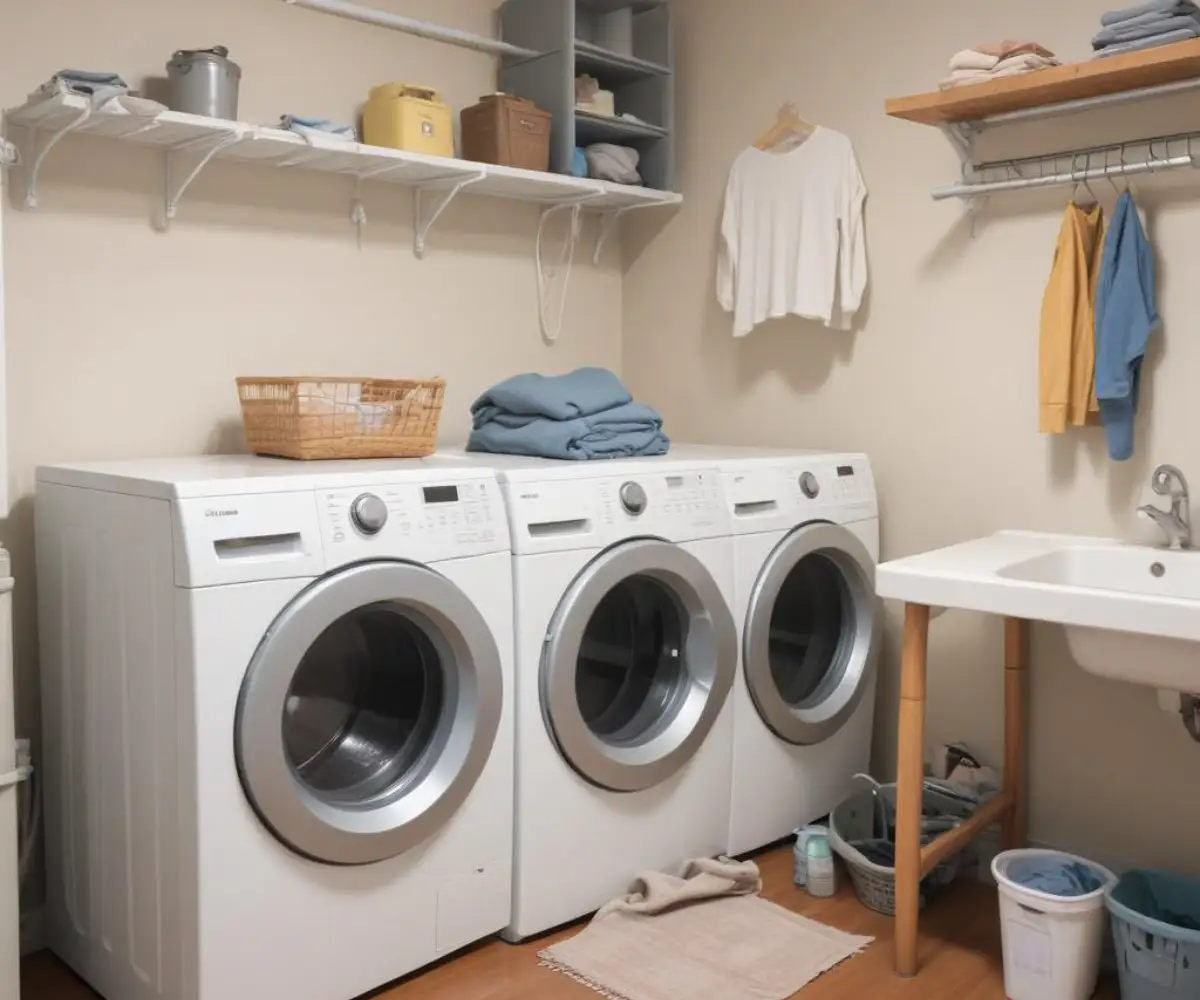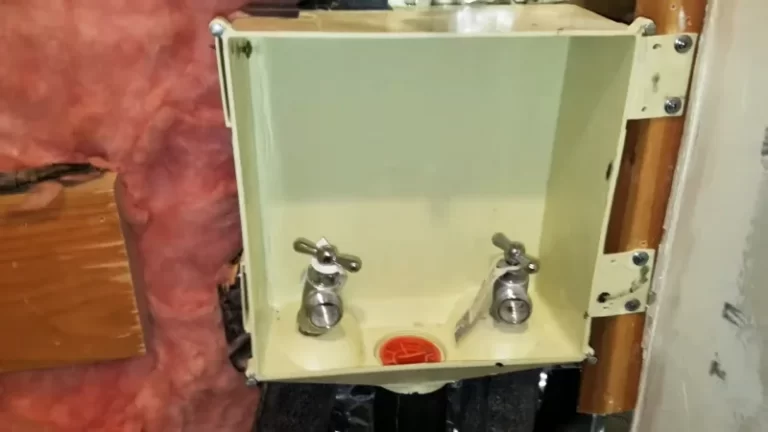How Much to Move Washer and Dryer? (Cost Guide)
Thinking about moving your washer and dryer? It seems simple enough, but this task is often more complex and costly than people expect. It’s not just about heavy lifting; it involves navigating tricky water lines, electrical work, and potentially damaging your home or appliances if done incorrectly.
Many homeowners are shocked by the hidden costs that can turn a seemingly straightforward task into a significant expense. This guide breaks down every potential cost, from professional movers to new plumbing, so you can budget accurately and avoid expensive surprises.
You'll Learn About
Why Moving a Washer & Dryer Isn’t Just a Simple Lift
Relocating a washer and dryer involves more than just muscle. These heavy appliances are tied directly into your home’s vital systems, including plumbing, electrical, and sometimes gas lines. Mishandling these connections can lead to leaks, electrical hazards, or damage to the appliances themselves.
The Hidden Complexities: Water and Drainage
Your washing machine is connected to both hot and cold water supply lines and a drain hose. These must be disconnected carefully to prevent leaks and water damage. Moving them to a new location often requires a plumber to install new hookups, which can be a major expense, especially if pipes need to be run through walls or floors.
The Electrical & Gas Connection Puzzle
Most electric dryers require a 240-volt outlet, which is different from the standard 120-volt outlets in your home. If your new laundry area doesn’t have one, you’ll need to hire an electrician. Gas dryers present another challenge, as they require a dedicated gas line that must be safely capped and reconnected by a qualified professional.
The Sheer Weight and Bulk Problem
Washers and dryers are notoriously heavy and awkward to move. Attempting to move them without proper equipment, like an appliance dolly, can lead to personal injury or damage to your floors, walls, and the appliances themselves. Navigating stairs, tight corners, and doorways adds another layer of difficulty.
The Core Question: How Much to Move Washer and Dryer?
The cost to move a washer and dryer can range from a couple of hundred dollars to several thousand. The final price depends heavily on whether you’re just moving the appliances to a new home with existing hookups or completely relocating your laundry room to a new part of the house. A full laundry room relocation can cost between $1,000 and $5,000 on average.
To give you a clearer picture, we’ve broken down the potential expenses. This table provides a snapshot of the services you might need and their average cost ranges.
| Service or Expense | Average Cost Range | Notes |
|---|---|---|
| Professional Appliance Movers (Local) | $100 – $300 | Covers the physical transport of the units only. |
| Plumber (Disconnect/Reconnect) | $150 – $350 | For homes with existing, accessible hookups. |
| Plumber (New Hookups & Drain) | $500 – $2,000+ | Required for relocating to a new spot without plumbing. |
| Electrician (New 240V Dryer Outlet) | $250 – $800 | Necessary if the new location lacks the proper outlet. |
| Gas Fitter (For Gas Dryer) | $200 – $500+ | For disconnecting/capping the old line and connecting the new one. |
| Dryer Vent Installation | $100 – $1,000 | Cost varies based on the length and complexity of the vent path. |
| DIY Equipment Rental (Dolly, Straps) | $30 – $60 per day | Does not include truck rental or other moving supplies. |
Professional Moving Costs: The Hassle-Free Option
For many, the safest and easiest way to move these bulky appliances is to hire professionals. This ensures the heavy lifting is done correctly and your appliances are transported without damage. However, it’s crucial to understand what services are included.
Hiring Standard Movers
If you’re already hiring a moving company for a household move, they can typically move your washer and dryer for an additional fee or as part of the total weight of your shipment. For a local move, expect to pay between $90 and $170 per hour for a moving crew. Be sure to clarify whether they handle disconnection and reconnection, as most standard movers do not.
Hiring Appliance Specialists
Some companies specialize in moving only appliances. These services are ideal if you only need the washer and dryer moved. They have the right equipment and expertise, and local appliance-only moves can cost between $100 and $300. This fee usually covers the physical move from one location to another.
What’s Included (and What’s Not)
Typically included in a professional move is the loading, transportation, and unloading of the appliances. What’s almost never included is the disconnection from water, gas, or electrical lines, nor the reconnection at the new location. You will need to hire separate licensed professionals for that work.
The Hidden Tradesmen Costs: Plumbers and Electricians
This is where the costs can escalate significantly, especially if you’re relocating your laundry area to a new part of your home. You’re not just moving appliances; you’re moving the infrastructure that supports them.

When Do You Need a Plumber?
You’ll need to hire a plumber, who typically charges between $45 and $150 per hour, in several scenarios. Even if you have existing hookups, a plumber can ensure the water is shut off correctly and the hoses are disconnected without causing leaks. If you’re moving to a spot without existing plumbing, a plumber will need to run new hot and cold water lines and a new drain line, which can cost anywhere from $500 to over $2,000.
The complexity of this installation can be similar to other major appliance setups. The process of ensuring water lines and drains are correctly placed is a detailed job, much like in a dishwasher with top controls installation, where precision is key to prevent leaks.
Calling an Electrician for Your Dryer
Electric dryers are power-hungry and require a 240-volt outlet. If your new laundry spot doesn’t have one, you must hire a licensed electrician. Installing a new 240V outlet can cost between $250 and $800, depending on the distance from your home’s breaker panel and the complexity of running the new wire.
The DIY Route: Saving Money at the Cost of Sweat
If you’re on a tight budget and have some handy skills, moving the appliances yourself is an option. However, the perceived savings can quickly disappear if you damage your home, the appliance, or yourself. A DIY move is not always the most affordable option when you factor in all the potential costs.
Essential Equipment Rentals
You cannot move a washer and dryer safely without the right tools. You will need to rent an appliance dolly, which is designed to handle tall, heavy items. You will also need moving blankets to protect the finish and straps to secure the appliances to the dolly and in the moving truck.
Vehicle and Fuel Costs
Unless you own a truck, you’ll need to rent one. Remember to factor in the daily rental fee, mileage charges, and the cost of fuel. These costs can add up, especially if you have to make multiple trips or are moving a long distance.
The Risks of DIY: Damage and Injury
The biggest hidden cost of a DIY move is the risk of something going wrong. Dropping an appliance can dent it, damage your floors, or even break the internal components. More importantly, back injuries from improper lifting are common and can be far more costly than hiring a professional mover.
Step-by-Step Guide to Safely Moving Your Appliances
If you decide to proceed with a DIY move, preparation is everything. Follow these steps carefully to minimize risks and ensure a smoother process.
Preparation and Disconnection
First, unplug the appliances from the wall. Turn off the water supply valves for the washing machine completely. Have a bucket ready to catch any residual water from the drain and supply hoses as you disconnect them.
The Physical Move
Secure the washer drum using shipping bolts if you still have them. With a helper, carefully tip the appliance and slide the appliance dolly underneath. Strap it in tightly before attempting to move it, and always have one person guiding and one person stabilizing.
Installation and Testing
Once in the new location, connect the water lines (hot to hot, cold to cold) and the drain hose. Before pushing the machine back, turn the water on and check for leaks. After reconnecting your dryer, it’s wise to run a cycle and check for any unusual signs; sometimes after a move, an issue can arise, similar to how a new dryer heating element smell can be normal but is worth monitoring.
Factors That Can Skyrocket Your Moving Costs
Certain situations can dramatically increase the cost of moving your washer and dryer. Being aware of these factors can help you anticipate the final bill.
Stairs and difficult access are major factors. Movers will charge extra for every flight of stairs. Relocating hookups to a different floor is one of the most expensive projects, potentially costing upwards of $5,000 or more due to the extensive plumbing and electrical work required.
The location also matters. Moving your laundry room to a garage or basement can cost between $1,200 and $5,000 because new water lines, drains, vents, and outlets are almost always needed. If the new location is an unconventional space, you may also need to consider how you will protect an outdoor washer and dryer from the elements.
Final Checklist & Money-Saving Tips
Moving a washer and dryer can be a costly endeavor, but with careful planning, you can manage the expense and ensure a smooth transition.
To save money, always get multiple quotes from different professionals, whether it’s movers, plumbers, or electricians. If you are doing a larger move, try to bundle the appliance relocation with other services. Finally, before you decide to move your old units, do a quick cost-benefit analysis—sometimes, the cost of moving and reinstalling old appliances can be close to the price of new ones, especially when you factor in delivery and basic installation often offered by retailers.
Ultimately, understanding the potential costs and complexities is the first step. Whether you hire a team of professionals or tackle the job yourself, being prepared will save you from the stress and financial strain of unexpected problems.

